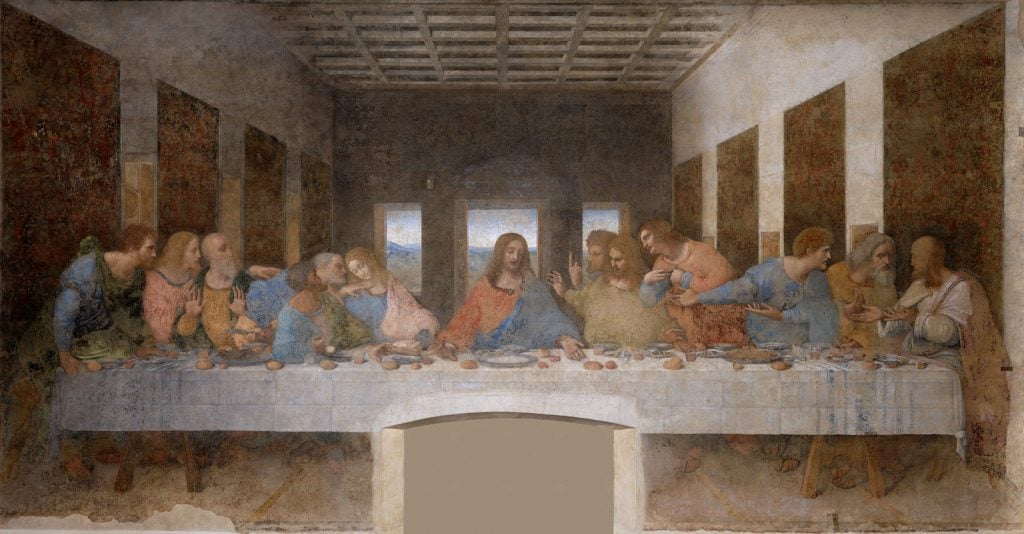Art World
Vatican ‘Saddened’ by ‘Last Supper’ Parody at Paris Olympics Opening
The statement was issued more than a week after controversy over the performance erupted.

The statement was issued more than a week after controversy over the performance erupted.

Jo Lawson-Tancred

The Vatican has publicly condemned a playful tableau at the Paris Olympic Games opening ceremony that has been widely interpreted as a contemporary reenactment of Leonardo da Vinci’s The Last Supper. In the place of devout disciples? A troupe of glamorous drag performers gathered around LGBTQ+ activist and DJ Barbara Butch, who takes the place of Jesus and wears a silver headpiece not unlike a halo.
Over a week after the ceremony on July 26, the Holy See has issued a statement saying it was “saddened by certain scenes” and “deplored the offense caused.”
“At a prestigious event where the whole world comes together to share common values, there should be no allusions ridiculing the religious convictions of many people,” the statement continued.
The Vatican added that it supported freedom of expression, but that this should be “limited by respect for others.”
The four-hour opening ceremony saw athletes float along the River Seine in a unique take on the parade of nations, with various performances along the route to the Eiffel Tower. The scene allegedly inspired by The Last Supper was part of a drag fashion show that took place on the Passerelle Debilly bridge.
In this scene from the Olympic opening ceremony, the famous painting of The Last Supper is recreated, but Jesus is replaced with an obese woman, while queer and trans figures (including a child!) depict her apostles.
Overt pagan and satanic symbolism. pic.twitter.com/YImWfFDekB
— Jenna Ellis (@realJennaEllis) July 26, 2024
The Vatican’s sentiments echo critiques made last week by the French Catholic Church’s conference of bishops, who said in a statement that they “deplored a ceremony that included scenes of derision and mockery of Christianity.”
They added: “We are thinking of all the Christians on every continent who have been hurt by the outrageousness and provocation of certain scenes. We want them to understand that the Olympic celebration goes far beyond the ideological biases of a few artists.”
The opening ceremony’s artistic director Thomas Jolly had adamantly denied that the scene was intended as a “mockery” of The Last Supper or Christian values. Rather, he had hoped to create a pagan-style party inspired by the God of Mount Olympus.

Leonardo da Vinci, The Last Supper (ca. 1494–98), mural in the Refectery of Santa Maria della Grazie, a Dominican Convent in Milan.
“My wish isn’t to be subversive, nor to mock or to shock. Most of all, I wanted to send a message of love, a message of inclusion and not at all to divide,” he said in an interview with the Associated Press.
Amid a wave of blatantly homophobic and transphobic reactions, the origins of the imagery soon became the subject of heated debate online. Some argued that the headpiece worn by Butch was a reference to France’s Lady Liberty icon rather than a halo. Others pointed out that there were 17 attendees to this particular feast when only 12 men attended The Last Supper.
“The idea of the central figure with a halo and a group of followers on either side—it’s so typical of The Last Supper iconography that to read it in any other way might be a little foolhardy,” art historian Sasha Grishin, of Australian National University, told the New York Times.
Op de #OpeningCeremony van #Paris2024 werd een tableau vivant (een levend schilderij) getoond van ‘Het Feest van de Goden’ van Jan van Bijlert uit 1635 (bewaard in het museum in Dijon). Apollo, de Zonnegod, is herkenbaar aan de stralenkrans, Bacchus aan de druiven op zijn hoofd. pic.twitter.com/gzLk1APOIy
— Walther Schoonenberg🎗️ (@WSchoonenberg) July 28, 2024
Other art historians have drawn different conclusions, finding a comparison in Jolly’s bacchanalian hijinks with Jan Harmensz van Biljert’s The Feast of the Gods (1635), a painting belonging to the French museum Magnin in the town of Dijon. After all, the ceremonial scene in Paris also featured Dionysus, the Greek god of wine and revelry, who would probably not “deplore” but adore this merry tableau vivant in his honor.
“Clearly, there was never an intention to show disrespect towards any religious group or belief… [Jolly] is not the first artist to make a reference to what is a world-famous work of art,” the Paris Olympics producers to the Wrap. “From Andy Warhol to The Simpsons, many have done it before him.” They have apologized for any offense caused.